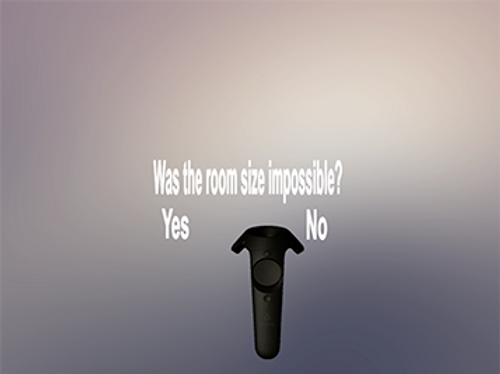Mission impossible spaces
Using Challenge-Based Distractors to Reduce Noticeability of Self-Overlapping Virtual Architecture
5th-semester project in AAU-CPH Mediology course, focused on furthering one of the redirected walking techniques, overlapping architecture, with the use of challenge-based distractors. The team consisted of 4 students including myself and a supervising teacher.



Overlapping architecture in this context meant two adjacent rooms share up to 75 percent of the same physical space, our goal was to find if the threshold when a person would notice this type of manipulation can be improved upon introducing a distracting element.

The challenge was to strike a balance between a meaningful experiment and experience because to get reliable data to conclude the study certain procedures that define experimental design have to be considered and in our case, we concluded that repeated measure exposure to a number of conditions would give us reliable data. But the problem with that was each participant spends a lot of time doing the same thing which in our view is not that fun.

Our answer was to gamify the experience into an escape room scenario, the participants would need to go through a jail escape. Which is not narratively heavy but at the same time the "player" goal is very clear, it requires little introduction, and most importantly it does not shift too much focus from the study to make it irrelevant in the academical context.



The base task is to visit two jail cells that are the adjesent rooms and find hidden objects with numbers to the keycode which are randomly placed at run time, which will allow them to open the elevator and move on to the next level. The manipulation itself takes place when the participant is in the corridor and passes a certain threshold so as to not see changes visually and so that the previous room has changed.



Knowing that a potential comparison between the two rooms is going to be made when walking to the next one the condition with the distractor is an addition of a mentally active task of avoiding a security camera in the corridor. It periodically revolves from left to right so the participant has to time the crossing in order not to get spotted.


After comparing the two conditions the results speak for themselves as people are clearly less likely to notice much higher levels of overlap when there is a higher mental load present. This being a gamified experience means that it is more likely to work in a certain scenario like games that have certain conditions in order to be successful compared to for example an art exhibit where the person would be in a different frame of mind so it would require further testing in a different scenario, however for this kind of application it shows a lot of potential.

